Our first series of tests will be dedicated to synthetic benchmarks. These are very often used for overclocking competitions , but are also very interesting for comparing different GPUs. So we’ll be focusing on benchmarks from the 3DMark series. For this new version of our graphics, and for the 3DMark tests, we have also isolated the GPU score. So you’ll find, where stipulated in the benchmark, the overall score and the GPU score.
3DMark Fire Strike and Fire Strike Ultra :
Let’s start with 3DMark Fire Strike, which is one of the most widely used benchmarks today. It consists of two graphics tests, a CPU test and a fourth test that combines GPU and CPU. Don’t forget to disable the demo, which makes no difference to the final score and (unnecessarily) prolongs the benchmark. The version used for these tests is, of course, the latest.
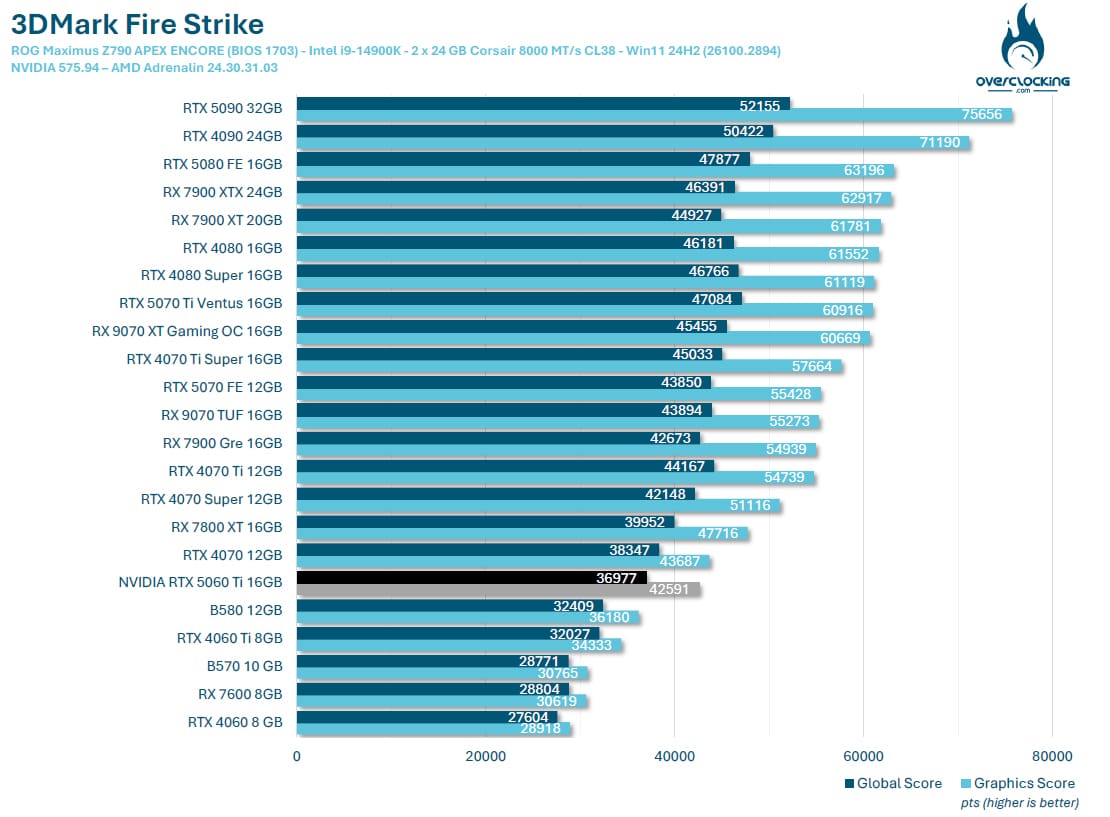
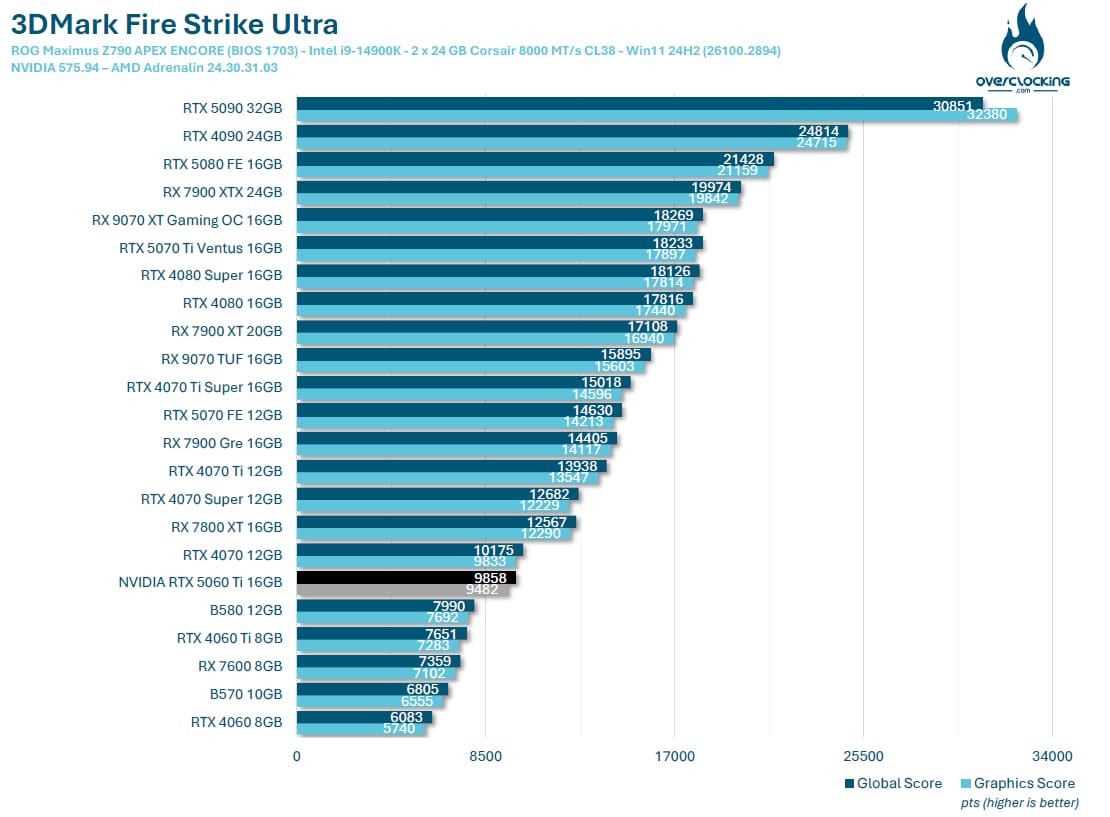
We begin our tests with the two Fire Strike and Fire Strike Ultra benchmarks. One thing we’re unfortunately going to miss in today’s graphics is the presence of a 16GB version of the RTX 4060 Ti. We’ll have to make do with the ‘8 GB’ version. The least we can say is that things are off to a good start, with a clear difference in performance compared to the previous generation and results close to those of the RTX 4070 FE.
3DMark Time Spy and Time Spy Extreme:
The second test is 3DMark Time Spy. Although this one is run in 1440p, its main feature is that it uses DirectX 12. It consists of two graphics tests and a CPU test. As with Fire Strike, don’t forget to disable the demo. These first two benchmarks are provided by UL Benchmark.
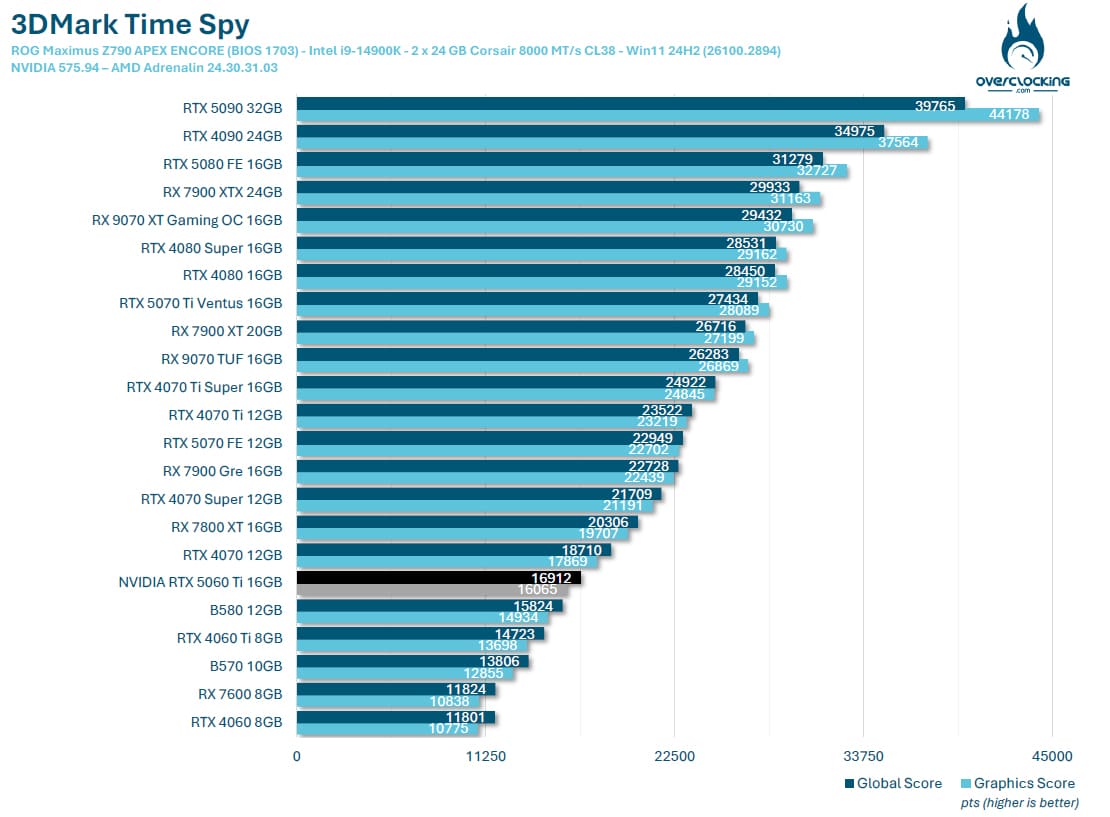
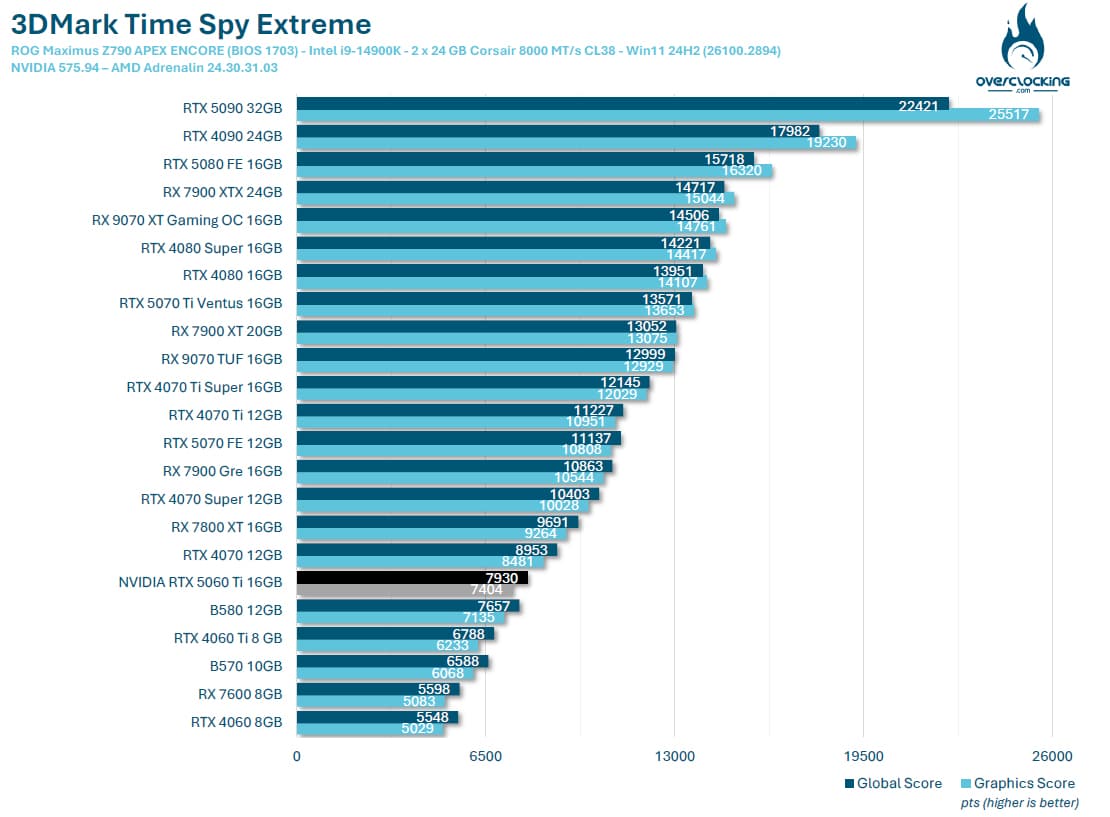
We continue with Time Spy, where the results are slightly behind the RTX 4070 FE, but still well ahead of the previous generation. Time Spy gives an initial idea of gaming performance, so we should have our MSI RTX 5060 Ti Gaming Trio OC 16 GB in a good position against the competition. However, and we’ll come back to this in our article, the difference with the RTX 5070 FE is very significant!
3DMark Speed Way :
This is the latest benchmark from Ulbenchmark, and it’s great to be able to say that we’re going to have a good go at this Speed Way. It uses DirectX 12 and is set to 1440p by default. We haven’t changed anything, so we’re using the original benchmark.
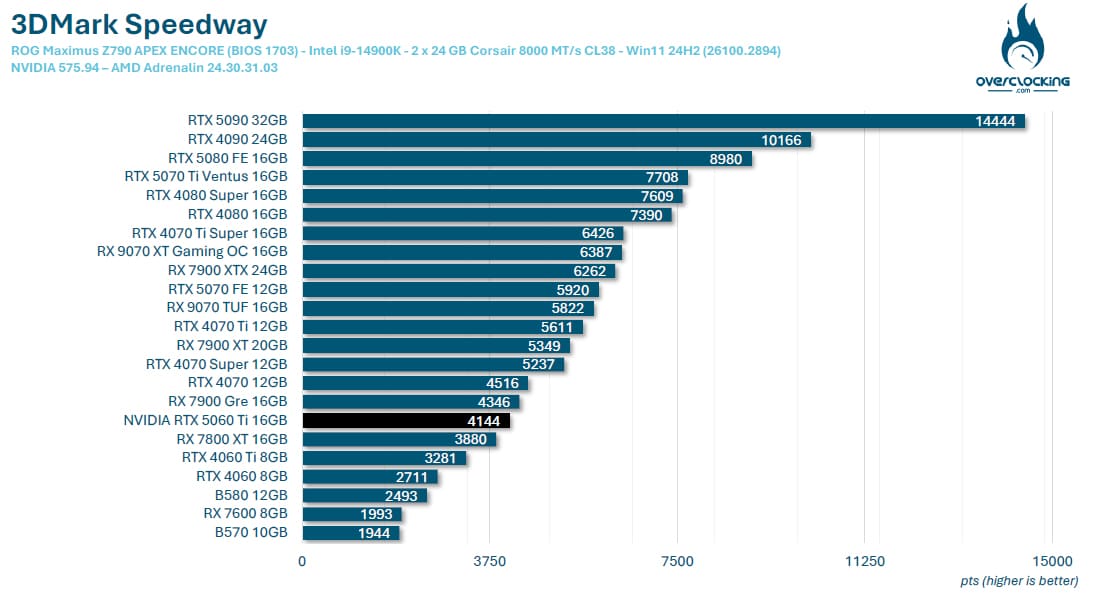
In Speed Way, our MSI RTX 5060 Ti Gaming Trio OC 16 GB obtained a score of 4144 points, which represents a 26% gain over the RTX 4060 Ti 8 GB and a 9% loss over the RTX 4070 FE.
3DMark Port Royal :
This is a benchmark that we left out last year, but which you were keen to see again in our tests. It’s still widely used, particularly in the overclocking community . So we’ve decided to add it to our tests.
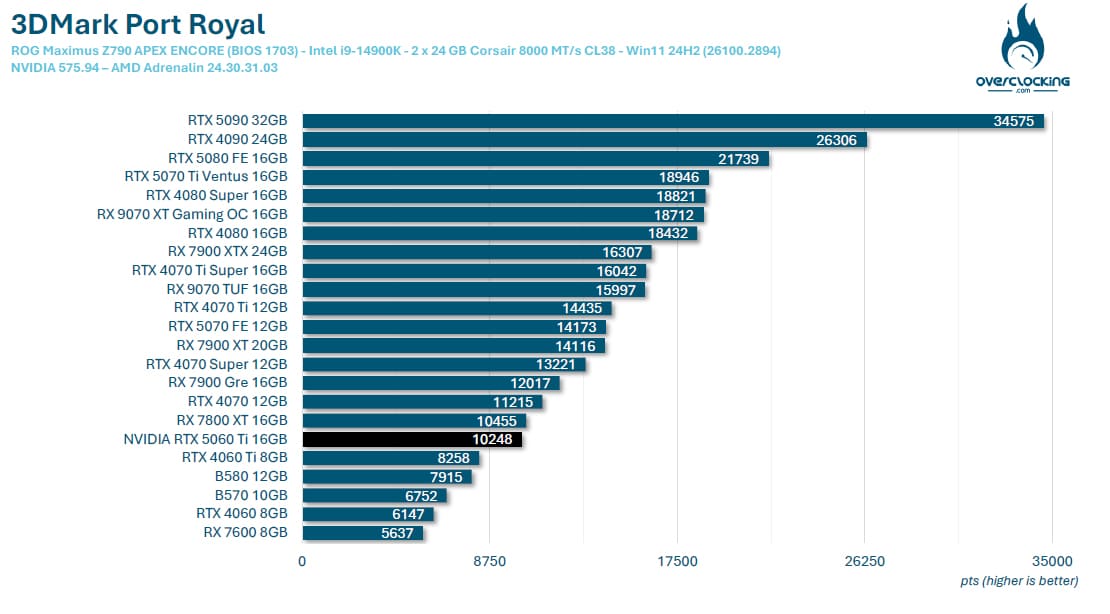
In Port Royal, our MSI RTX 5060 Ti Gaming Trio OC 16 GB passes the 10K mark with a score of 10248 points.
3DMark Steel Nomad :
The latest benchmark in the 3DMark suite, Steel Nomad will replace Time Spy as the most recent benchmark in the 3DMark suite. However, the good news is that it will be free for users who already have a key. The programme includes a test bench based on Microsoft’s DirectX12 API. However, there will be no ray tracing, but the scene will use an ‘extreme’ level of geometry and rasterised light.

Finally, the last benchmark in the 3DMark series, Steel Nomad, which has just arrived, gave our MSI RTX 5060 Ti Gaming Trio OC 16 GB an excellent performance, with a score of 3,588 points, i.e. 23% more performance than the RTX 4070 Ti 8 GB.



